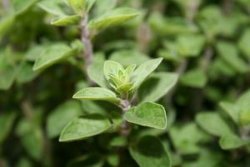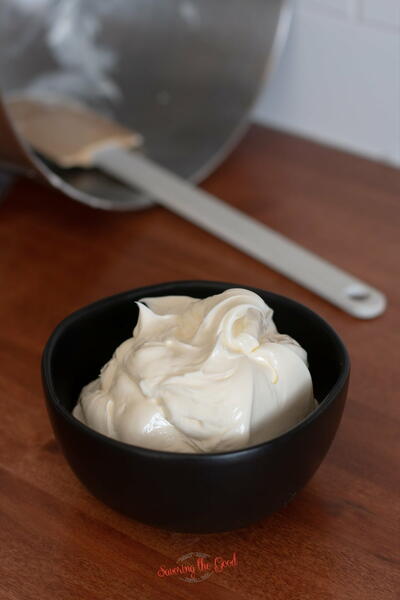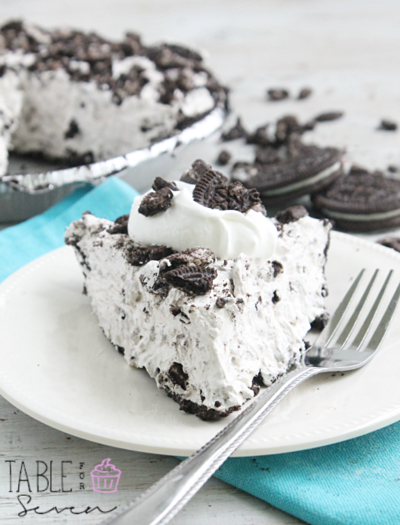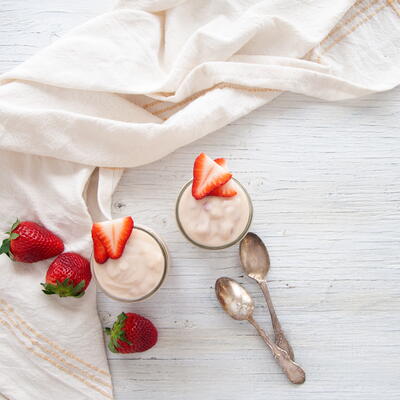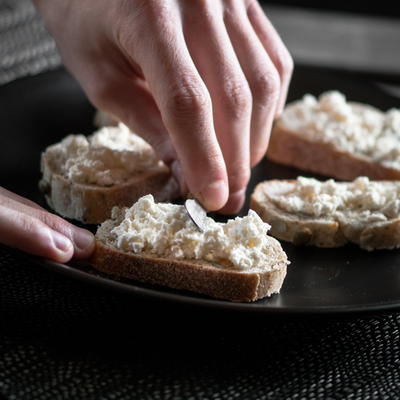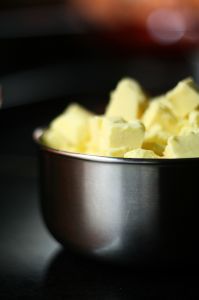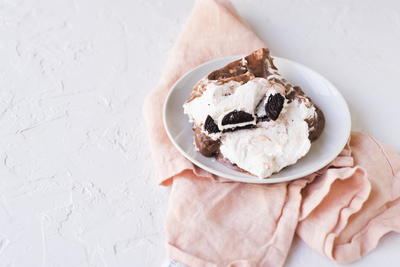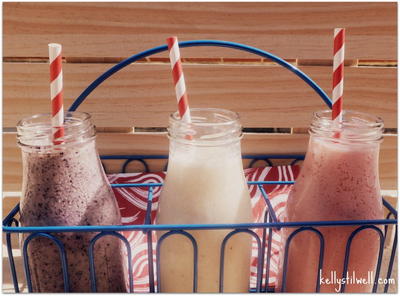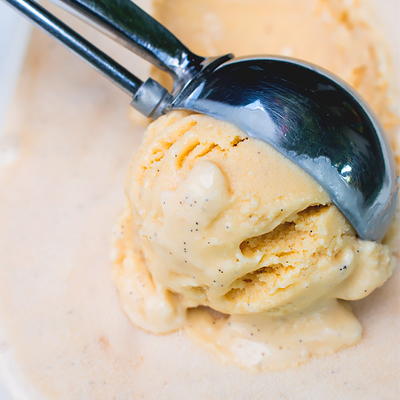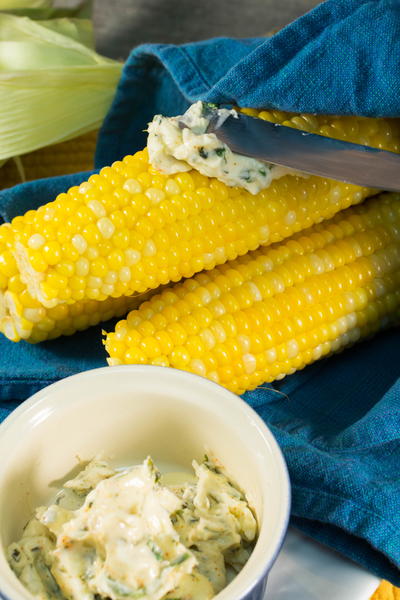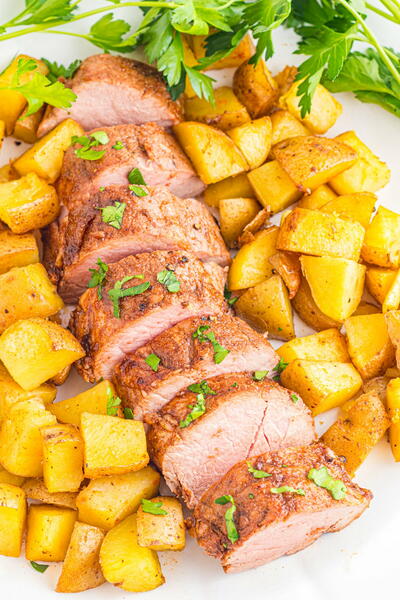Fresh Mozzarella (makes 2 1/2 To 3 Pounds)
Ingredients
- Rennet, tablets or liquid, is found in pharmacies and health-food stores
- 3 cups whipping cream
- 1 3/4 gallon plus 1 cup nonfat milk (29 cups total)
- 1/4 rennet tablet or 1 teaspoon liquid rennet
- 1/4 cup cool water (about 70 degrees F.)
- 1/2 cup freshly opened buttermilk
- Brine (directions follow)
Instructions
Before you begin, sterilize all tools and containers by pouring boiling water over them or immersing them in boiling water. During the cheesemaking process, have boiling water on hand to pour over tools -- spoons and thermometer in particular -- each time you return them to the milk mixture. This prevents certain bacteria from affecting the cheese's flavor. To make the curd, pour cream and nonfat milk into a 3-4 gallon pan; stir with a metal spoon to mix. Place pan on lowest heat until milk is 90 degrees, stirring occasionally and checking temperature often; if liquid is cold, this may take up to 1 hour. But be patient, since higher cooking temperatures are harder to control. As the milk heats, combine the rennet and cool water in a small bowl. Let the mixture stand until completely dissolved, about 15 minutes, you may need to crush the tablet with the back of a spoon. (Or mix liquid rennet with water in a bowl.) When the milk reaches 90 deg., add buttermilk and stir thoroughly with a spoon. Ladle out any butter lumps. Slowly pour rennet mixture in a spiraling pattern over milk, stirring. Continue to stir for 3 to 5 minutes, using an up-down circular motion to distribute the rennet evenly. Keep the milk at 90 degrees until it forms a clot firm enough to hold its shape in a spoon, 30 to 45 minutes; check temperature about every 5 minutes, removing mixture from heat intermittently, if needed. As you check the temperature, insert the thermometer gently to avoid breaking clot more than necessary. Next, to create crosshatch pattern and to release clear-colored whey, cut through solid clot to pan bottom with a long knife. First cut clot across, then at right angles for 1/2-inch squares. Then cut diagonally, holding knife at a 45 degree angle; turn pan at right angle and repeat. Let curds stand on low heat at 90 degrees for 15 minutes longer (remove pan occasionally, if necessary, to keep temperature from fluctuating), then stir with a slotted spoon for 30 seconds. >From this point on, you need clean but not sterilized equipment. Quickly line a large colander with at least 2 layers of cheese-cloth, edges overlapping rim; set in a sink with an open drain. Ladle curds into colander. Let stand until curds stop dripping, about 1 hour. To protect cheese's flavor, place colander in a large pan; cover airtight with plastic wrap. Chill until curd is ready to shape (see below), 1 to 4 days. Each day, replace cheesecloth and discard whey. Testing the curd. To determine when curd is ready to shape, cut off a small 1/4-inch slice and cover with hot water (170 degrees to 180 degrees). If after 15 to 30 seconds the slice begins to soften and melt and, when held by 1 end, the piece stretches from its own weight, it's ready. If the slice doesn't stretch but tears, chill remaining curd, testing daily, up to 4 days. If curd still won't melt -- milk got too hot or sufficient acidity did not develop -- slice and cover with hot water (170 to 180 degrees), stirring. Drain, rinse with cold water, drain again. Season with salt; eat like cottage cheese. Shaping the curd. Divide the ready curd in 4 equal portions; let the number of portions you want to use come to room temperature. Cover and chill remaining curd in cloth-lined colander until you want to shape it -- no more than 5 days from when you started. Working with 1 curd portion at a time, trim off and discard any dried- looking bits. Cut curd into 1/4-inch-thick slices and put into a large bowl. Pour about 1 quart hot water (170 to 180 degrees) over slices to cover; let stand 1/2 to 1 minute to warm and begin to melt. With the back of a large spoon, gently push slices together and lift them from beneath, also on spoon back, so the weight of the cheese makes it stretch. Repeat lifting cheese along the length to stretch it; don't let rope fold back onto itself. When cheese is flowing softly, lift 1 end of the rope from the water and roll it under itself to form a smooth-surfaced ball 1 to 2 inches thick; pinch from rope and drop into brine. Working quickly, repeat to shape rest of cheese; if handled too slowly or roughly, cheese looks uneven -- but it's fine to eat. Keep cheese in brine 5 to 15 minutes to flavor (saltiness depends on length of time in brine); lift from brine. For tenderest texture and most delicate flavor, rinse and serve at once; or keep cold, covered, no more than 4 hours. Flat to bitter flavors develop when cheese is past its prime, although it is safe to eat. Repeat to shape remaining cheese. Makes 2 1/2 to 3 pounds, depending on how long the curd drains before shaping. Per ounce, estimated only; 60 cal.; 4 g protein; 4.5 g fat; 1 g carbo.; sodium varies with time in brine; 15 mg chol. Brine. In a corrosion-resistant bowl, make enough brine to cover cheese, using 1/2 cup salt for each 1 quart water.
Read NextPatriotic Milkshake Recipes

